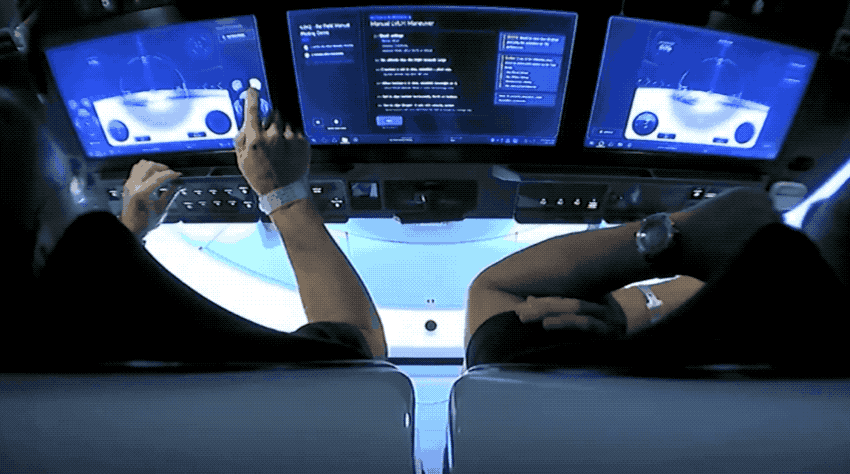NASA astronauts Doug Hurley took over manual control of the SpaceX Crew Dragon spacecraft on Saturday, shortly after the vehicle’s historic first launch from Cape Canaveral in Florida. Crew Dragon is designed to fly entirely autonomous throughout the full duration of its missions, including automated docking, de-orbit and landing procedures, but it has manual control systems in case anything should go wrong and the astronauts have to take over. This test is the first time the manual controls have been used in space, and is a key part of certifying Crew Dragon for regularly operational human flight.
Astronaut Bob Behnken and Hurley removed their fashionable SpaceX space suits just before Hurley completed the manual maneuvers, which is also part of the plan. They’re able to go without the suits in the pressurized cabin during its transit to the ISS, only needing to put them back on for space station docking, and the interior of Crew Dragon actually provides them a fair amount of room to move around in. This also makes it easier for them to operate the spacecraft controls.
The manual maneuver testing including Hurley going through the process of using the spacecraft’s touchscreen controls to put the capsule into what’s called LVLH (local vertical local horizontal ) attitude, using Earth as a reference navigation point. That basically means putting Dragon in the same orientation as an airplane flying over Earth, with the planet located ‘underneath’ the Dragon as it flies. The test involves notifying the flight computer to not take over as Hurley conducts the maneuvers, but doesn’t involve actually finalizing the control orders by sending them to the flight computer, since it will be the one actually completing the automated flight and docking process.

Hurley will conduct two tests during the mission, the one he just did called a “far-field” flight test because it’s far away from the ISS, and one called the “near-field” test which will be conducted when they’re closer to the station.
You can actually try out the manual control system that Behnken and Hurley used yourself – no spaceship required. All you need is a browser, and this ISS Docking Simulator created and released by SpaceX. It’s a bit tricky, but not as hard as you might think thanks to an intuitive control interface design.
Comments
Post a Comment